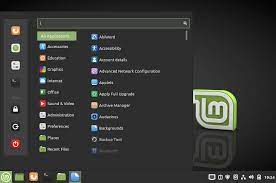The Linux Distro with the Best Support: A Comprehensive Guide
The Linux Distro with the Best Support
When it comes to choosing a Linux distribution, one of the key factors to consider is the level of support available. While the open-source nature of Linux means that there is a wealth of community-driven support for most distributions, some stand out for their exceptional levels of assistance and guidance.
Ubuntu
Ubuntu is renowned for its user-friendly approach and extensive support resources. With a large and active community, users can find answers to their questions on forums, mailing lists, and official documentation. Ubuntu also offers professional support services for those who require additional assistance.
Debian
Debian is known for its stability and reliability, making it a popular choice for servers and mission-critical systems. The Debian community provides excellent support through mailing lists, forums, and dedicated documentation. Users can rely on Debian’s long-term support (LTS) releases for extended maintenance and security updates.
openSUSE
openSUSE offers a comprehensive support infrastructure through its community forums, knowledge base articles, and expert-led documentation. The openSUSE project also provides professional support options for businesses and organisations seeking tailored assistance.
Fedora
Fedora’s commitment to cutting-edge technology is matched by its robust support ecosystem. Users can access help through forums, IRC channels, and Fedora’s extensive wiki pages. Fedora’s rapid release cycle ensures that users receive timely updates and support for the latest software innovations.
In conclusion, while many Linux distributions offer strong community support, Ubuntu, Debian, openSUSE, and Fedora are among the top choices for users seeking a distro with the best support options. Whether you are a beginner or an experienced user, these distributions provide the resources you need to make the most of your Linux experience.
Top 5 Reasons Why This Linux Distro Excels in Support and Reliability
- Extensive community-driven support through forums and mailing lists
- Professional support services available for additional assistance
- Regular updates and security patches ensure system reliability
- Dedicated documentation for easy troubleshooting and guidance
- Long-term support (LTS) releases for extended maintenance
Challenges of Linux Distributions with Comprehensive Support: Navigating Costs, Complexity, and Compatibility
- 1. Overwhelming amount of support options can be confusing for beginners.
- 2. Professional support services may come at a cost, which could be prohibitive for some users.
- 3. Reliance on community-driven support means response times may vary and solutions may not always be guaranteed.
- 4. Updates and changes in the distribution can sometimes lead to compatibility issues with existing software or hardware.
- 5. High level of technical documentation and resources may require users to have a certain level of expertise to navigate effectively.
Extensive community-driven support through forums and mailing lists
One of the standout advantages of Linux distributions known for their exceptional support is the extensive community-driven assistance available through forums and mailing lists. Users benefit from a vast pool of knowledge and expertise shared by fellow enthusiasts, developers, and experts within these online communities. Whether seeking troubleshooting tips, software recommendations, or general guidance, users can rely on the collective wisdom and active engagement found in these forums and mailing lists to address their queries promptly and effectively. This collaborative approach not only fosters a sense of camaraderie among users but also ensures that help is readily accessible for individuals at all levels of expertise navigating their Linux journey.
Professional support services available for additional assistance
One significant advantage of choosing a Linux distribution with the best support is the availability of professional support services for additional assistance. This feature provides users with access to expert guidance and troubleshooting from trained professionals, ensuring that any technical issues or complexities can be addressed promptly and effectively. By offering professional support services, Linux distros demonstrate a commitment to customer satisfaction and user experience, making them a reliable choice for individuals and businesses seeking comprehensive assistance in navigating the world of open-source software.
Regular updates and security patches ensure system reliability
One of the standout advantages of Linux distributions with top-tier support is their commitment to providing regular updates and security patches. By ensuring that the system is continuously updated with the latest software enhancements and security fixes, these distros guarantee system reliability and stability. Users can rest assured that their operating system remains secure against potential threats and vulnerabilities, while also benefiting from improved performance and functionality with each update. This proactive approach to maintenance not only enhances the user experience but also reflects the dedication of these distributions to prioritising the safety and reliability of their users’ systems.
Dedicated documentation for easy troubleshooting and guidance
One notable advantage of Linux distributions with the best support is their provision of dedicated documentation tailored to facilitate easy troubleshooting and guidance. These comprehensive resources serve as invaluable tools for users seeking assistance in resolving issues, understanding system configurations, and mastering advanced features. By offering well-organised and detailed documentation, these distros empower users to navigate complexities with confidence and efficiency, ultimately enhancing the overall user experience and fostering a sense of community-driven learning and support.
Long-term support (LTS) releases for extended maintenance
One notable advantage of Linux distributions with the best support is their provision of long-term support (LTS) releases, ensuring extended maintenance and security updates for users. LTS releases offer a stable and reliable platform for both personal and enterprise use, allowing users to benefit from a consistent and secure operating system over an extended period. This feature is particularly valuable for organisations and individuals seeking a dependable solution that prioritises longevity and continuity in software maintenance.
1. Overwhelming amount of support options can be confusing for beginners.
For beginners, the overwhelming amount of support options available for Linux distributions with the best support can often be a double-edged sword. While having a plethora of resources such as forums, documentation, and community assistance is beneficial, it can also lead to confusion and uncertainty. Navigating through the various support channels may prove challenging for newcomers, potentially causing them to feel overwhelmed and unsure about where to seek help. In such cases, beginners may benefit from streamlined guidance on how to access and utilise the support options effectively to make their Linux experience more manageable and less intimidating.
2. Professional support services may come at a cost, which could be prohibitive for some users.
One potential downside of opting for a Linux distribution with top-tier support is that professional support services often incur a cost, which may be restrictive for certain users. While the availability of paid support can be beneficial for businesses and individuals requiring dedicated assistance, the associated expenses could deter budget-conscious users from accessing premium levels of support. This financial barrier may limit the accessibility of comprehensive support services to a subset of users, highlighting a challenge in balancing quality assistance with affordability within the Linux ecosystem.
3. Reliance on community-driven support means response times may vary and solutions may not always be guaranteed.
One notable drawback of choosing a Linux distribution with strong community support is the reliance on community-driven assistance, which can lead to varying response times and a lack of guaranteed solutions. While the Linux community is known for its helpfulness and expertise, the availability of timely help may fluctuate depending on the complexity of the issue and the availability of knowledgeable users. As a result, users may experience delays in receiving support and may not always find definitive solutions to their problems when relying solely on community-driven assistance.
4. Updates and changes in the distribution can sometimes lead to compatibility issues with existing software or hardware.
One notable drawback of Linux distributions with exceptional support is that updates and changes within the distribution can occasionally result in compatibility issues with existing software or hardware. While updates are crucial for security patches, performance enhancements, and new features, users may encounter challenges when certain applications or devices are no longer compatible with the updated system. This can lead to disruptions in workflow and require users to troubleshoot or seek assistance to resolve compatibility issues effectively.
5. High level of technical documentation and resources may require users to have a certain level of expertise to navigate effectively.
One potential drawback of Linux distributions with exceptional support is that the high level of technical documentation and resources available may necessitate users to possess a certain level of expertise to navigate them effectively. While these resources are invaluable for advanced users and professionals, beginners or those with limited technical knowledge may find it challenging to fully utilise and benefit from the wealth of information provided. This can create a barrier for some users in accessing the full range of support available, requiring them to invest additional time and effort in building their skills to make the most of the support offered by these distributions.










